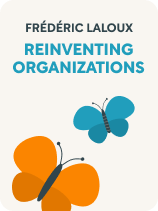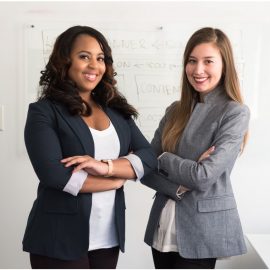

This article is an excerpt from the Shortform book guide to "Reinventing Organizations" by Frédéric Laloux. Shortform has the world's best summaries and analyses of books you should be reading.
Like this article? Sign up for a free trial here.
Who should hold the decision-making power in an organization? What’s the trend in this arena?
Some emerging organizations operate from a new set of rules that veer away from hierarchical structures based on power and achievement. The most counterintuitive aspect of these visionary organizations is their approach to making decisions.
Continue reading to learn about this revolutionary approach to decision-making in organizations.
Decision-Making in Organizations
Frédéric Laloux explains that the decision-making in organizations that are visionary (what he calls “Teal organizations”) is about gathering advice rather than consensus. Anyone can make a decision for the company, so long as they seek advice beforehand. Because everyone in the company has this power, it increases everyone’s responsibility, demands cooperation, and mandates the need for transparent communication.
Laloux says that, theoretically, anyone in the company can make any decision, regardless of scope. This includes creating new roles, spending company funds, finding new clients, and implementing new systems. What’s important is that the size of the decision determines how much advice must be sought. Everyone impacted by the choice should be consulted, all the way to the CEO for decisions that affect the whole company.
| The Netflix Model One highly visible company that grants its employees a free hand to make decisions regarding their own projects is Netflix, as described by CEO Reed Hastings in No Rules Rules. By letting workers make (and be accountable for) crucial decisions that benefit the company, Netflix has been able to adapt to an ever-changing entertainment landscape. Agreeing with Laloux’s advice-seeking model, Hastings emphasizes that Netflix employees are expected to make well-informed decisions after gathering feedback from managers and colleagues. Because absolute candor is necessary for this process, it’s considered bad form for a colleague to withhold a skeptical or contrary opinion. However, it must be noted that Netflix employees aren’t able to make company-wide decisions, as is the case with the model Laloux advocates. |
Laloux makes it clear that the advice-seeking process is not a quest for consensus. Once the appropriate advice has been given, the employee can make whatever decision they feel is right. The advice process gives everyone a voice, but it doesn’t give anyone a veto, not even the CEO. In fact, even the CEO must go through this process before making decisions. Not doing so is a sure way to get fired.
Distributing so much power throughout the organization means it’s absolutely necessary that everyone employed has access to all available information. Laloux says that keeping information compartmentalized would be lethal to companies in which anyone can steer the ship. Visionary organizations make use of intranets, blogs, and all-hands meetings to keep staff apprised of the company’s initiatives, as well as any difficulties it’s currently facing.
| The Bridgewater Model In Principles: Life and Work, Bridgewater CEO Ray Dalio describes seeking advice from others as a process of setting aside your ego. He emphasizes that your goal should be to find the best answer to a problem, no matter where it comes from. It’s important to judge every source’s credibility, but you should also be aware of your own blind spots and accept that other people may have better ideas. Dalio is also a proponent of extreme transparency, to the point that Bridgewater records all meetings and interviews, and makes them available to all employees. This practice reduces bad behavior and self-serving politics while providing teachable examples for staff. |

———End of Preview———
Like what you just read? Read the rest of the world's best book summary and analysis of Frédéric Laloux's "Reinventing Organizations" at Shortform.
Here's what you'll find in our full Reinventing Organizations summary:
- The practices and values that are inherent in the next level of human organization
- A look at the paradigm shifts in organizational structure over the past 10,000 years
- How to implement visionary practices at your company





